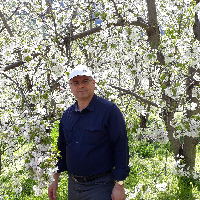Variations in yield and yield components by seed priming with three anti-gibberellin regulators on wheat cv. Azar-2
Author(s):
Abstract:
In this research, the effects of seed priming with three anti-gibberellin regulators were investigated on yield and yield components of wheat cv. Azar-2, based on randomized complete block design with three replications under regular irrigation conditions in research field of University of Zanjan, Zanjan, Iran, in 2012-2013. The experimental treatments were control (non-primed seeds), hydropriming, chlormequat chloride (400, 800, 1200 and 1600 μM), paclobutrazol (35, 70, 105 and 140 μM) and ancimidol (10, 20, 30 and 40 μM). The biological yield decreased in most treatments compared to control. On the other hand, seed priming with all of the growth retardants increased the grain yield. In contrast, the use of three growth retarder totally improved the grain yield of wheat cv. Azar-2. Among the growth regulators, paclobutrazol in 140, ancymidol in 20 and chlormequat chloride in 800 μM had the highest grain yield. Seed priming with mentioned growth retardants increased 1000-kernel weight compared to control. The highest fertile spike/m2 and seed/spike was found in 800 μM chlormequat chloride and 20 μM ancymidol, respectively. By increment in the number of fertile spikes, the length of spike decreased significantly. As a result, there are smaller spikes but with large grains in each plant. It seems that Azar-2 cultivar has a potential for increasing both the number of grain/spike and grain weight. Therefore, it is possible to increase grain yield in this cultivar by improving sink straight from both ways.
Keywords:
Language:
Persian
Published:
A Quarterly Journal Cereal Research, Volume:6 Issue: 3, 2017
Pages:
339 to 351
https://magiran.com/p1687640
مقالات دیگری از این نویسنده (گان)
-
Evaluation of Relationships between Stomatal Dimensions and Density with the Root System in Bread Wheat Cultivars and Lines under Rainfed Conditions
Ramin Sadegh Ghol Moghadam*, Jalal Saba, , Mozafar Rousraii, Soheila Moradi
Journal of Crop Breeding, -
Combining ability and heterosis of spring oilseed rape genotypes under normal irrigation and drought stress conditions
Parvaneh Gholizadeh Sarcheshmeh, Hasan Amiri Oghan*, , Amir Gholizadeh
Journal of Crop Breeding,



